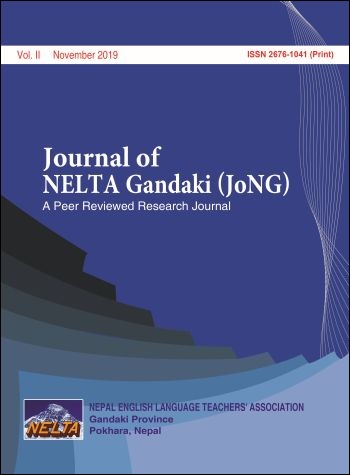Linguistic Landscapes in Multilingual Nepal: Urban Context
DOI:
https://doi.org/10.3126/jong.v2i0.26600Keywords:
language battle, linguistic landscapes, presumed reader, sign writer, symbolic valueAbstract
Diversity in the linguistic landscape is a common phenomenon in multilingual country Nepal. We observe varied textual forms of language and signs in public spaces and spheres that surround us. Therefore, this study concerns to analyze the signs in linguistic landscapes in multilingual urban settings in Nepal. It reveals the status of different languages, deals with issues related to multilingualism, language policy, linguistic diversity, minority languages, hierarchies, and users. Besides, it observes intricacies of language contact and choice, power and status of language groups, and sociolinguistic situation. For this, observation and interpretative method of qualitative research were employed, 150 photographs were purposively snapped from five urban spaces in two month time. The signs were analyzed, compared and contrasted using a thematic approach with relevant theoretical backup. The finding revealed that the choice of language on signs bases on sign writer’s skill, presumed reader and symbolic value (Spolsky & Cooper, 1991). The study explored that the majority of urban linguistic landscapes are occupied by English signs, and English imperialism is a greater challenge for Nepali and vernacular languages. It is inferred that diversity in linguistic landscapes is the concrete manifestation of multilingual society where languages battle for their existence; therefore, the multilingual policy is the stipulation of the day.
Downloads
Downloads
Published
How to Cite
Issue
Section
License
This license allows reusers to distribute, remix, adapt, and build upon the material in any medium or format for noncommercial purposes only, and only so long as attribution is given to the creator.




